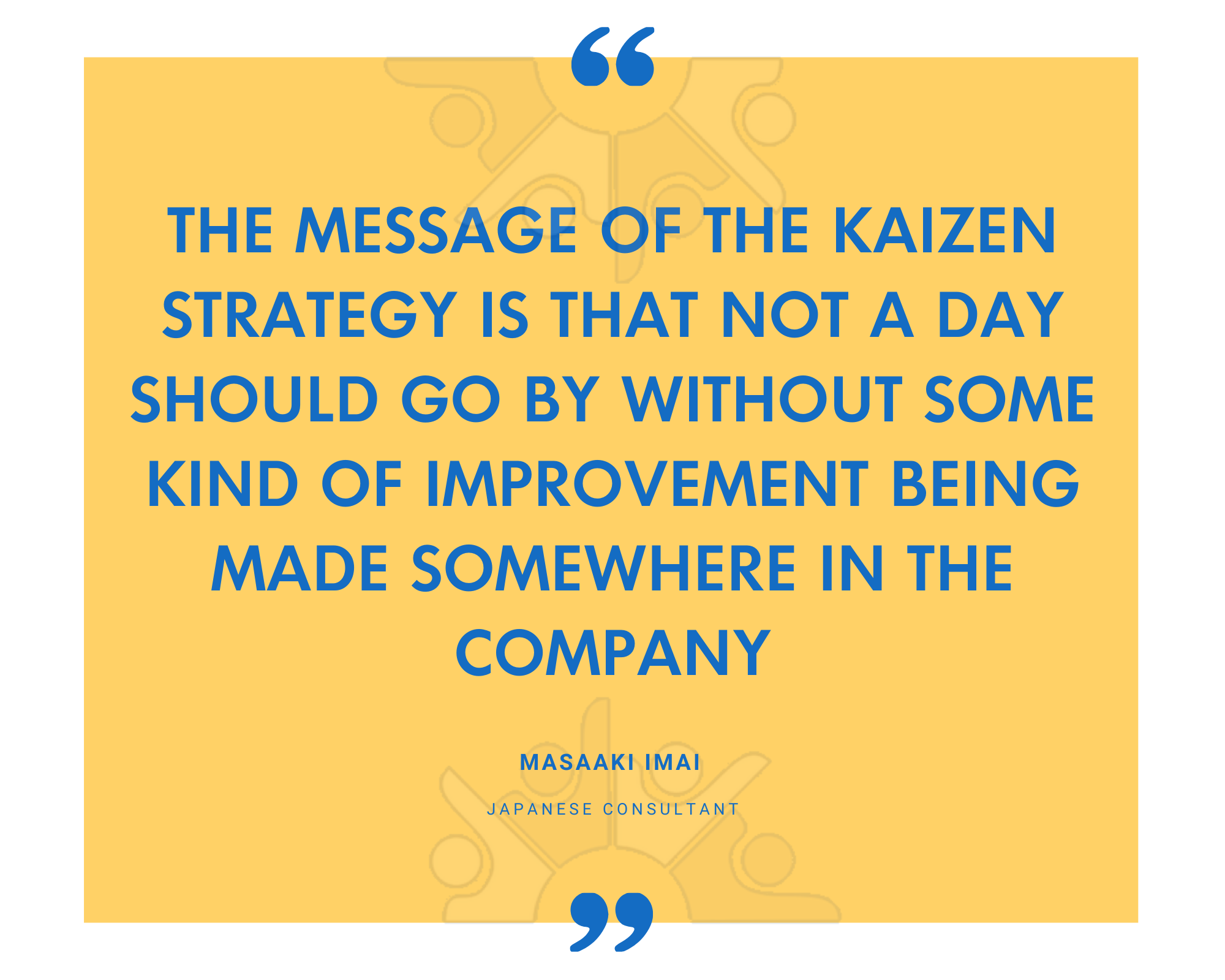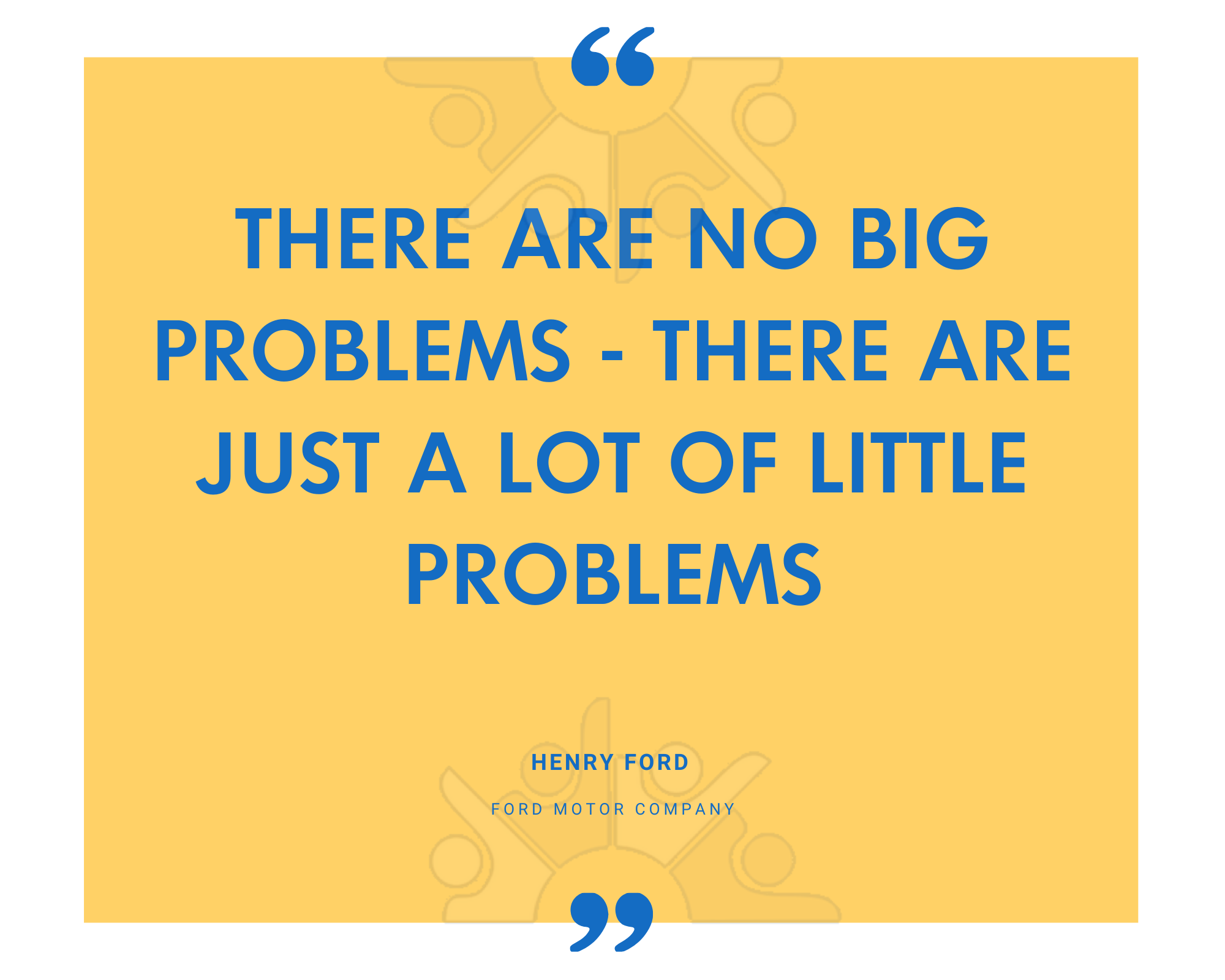Japanese companies are internationally renowned for their high levels of innovation and productivity. But what systems have they put in place which allows them to achieve such spectacular results? How can you adopt these practices in your own company?
Let’s take a look at Kaizen, the continuous performance management process which has boosted output and swiftly resolved problems for some of the most successful companies in the world.
What is Kaizen continuous improvement?

Some of the guiding principles of Kaizen continuous improvement to consider are:
- Create a company culture in which employees are empowered to contribute ideas and solutions
- Challenge the status quo and seek proactive engagement with problems
- Gather data and opinions from a wide cross-section of your business
- Be creative: search for low cost solutions and small improvements
- Look to resolve issues as soon as you make mistakes
The benefits of Kaizen
Kaizen continuous improvement can benefit your company in a variety of ways, improving production processes while engaging your employees and giving them a sense that their input has a positive impact on the development of the business.
With an increased sense of commitment to the company, Kaizen also helps boost your employee retention rates while strengthening teams, as well as introducing a healthy degree of competitiveness into the workforce with continuous problem-solving. As Kaizen involves an ongoing process of identifying areas for improvement and creating solutions, it fosters a culture in which employees are actively engaged, from leaders and management down to the shop floor.
Kaisen continuous improvement also boosts awareness of customer requirements, allowing companies to focus more accurately on the requirements of their clients
How to implement Kaizen continuous improvement
 General methodology
General methodology
There are a variety of suggested methods for implementing Kaizen continuous improvement which has been adopted by different companies. Typically, implementation of the process follows this pattern:
1. Setting goals. With the involvement of employees, gather information relating to any problems – or opportunities – which require addressing.
2. Analyse the situation. Coordinating with employees, review the current situation.
3. Gather ideas for solutions. Gather creative solutions, encouraging as many ideas as possible to consider.
4. Implement solutions. Put the winning solution(s) into practice, monitoring them closely for results and if necessary creating pilot programs or other small-scale projects.
5. Analyse the results. Check to see which solutions deliver the best results and which might need improving or discarding.
6. Standardize successful solutions. Once a positive solution has been found, roll it out throughout your organization.

The Toyota production system (PDCA)
The Toyota production system is one of the common methods for implementing Kaizen continuous improvement, and is constructed of four key phases: plan, do, check, act. First, objectives and processes required to deliver the results are planned, followed by implementation in small iterative stages to allow for changes. Data from the “Do” stage is then analysed and compared to expected outcomes, before finally these processes are improved, root causes of issues are investigated and risk is re-evaluated before moving on to the next cycle.
Additionally. Kaizen continuous improvement can incorporate other approaches and tools to further boost performance, for instance:
Value stream mapping
Value stream mapping offers a visual tool that displays the critical steps in a given process and identifies waste. In conjunction with Kaizen continuous improvement, this can help identify processes that are inefficient and allow for faster correction of mistakes.
Total quality management
Aligning Kaizen continuous improvement to total quality management can help to foster a culture in which improvement is woven into the processes across all departments of your company. For example, this could include sales and marketing, accounting and finance and engineering and design, encouraging continuous improvement through goal setting and training, while raising awareness of objectives across your company’s departments.
Six Sigma
Developed by Bill Smith at Motorola, the Six Sigma technique aims to identify and minimize defects and other problems, for example improving production schedules and customer satisfaction, or reducing costs and other obstacles. While Sigma emphasises quality of output, these continuous efforts can be paired with Kaizen to coordinate employees and teams and boost engagement and productivity.
Kaizen continuous improvement success stories
Countless companies have found success through the implementation of Kaizen continuous improvement, with reductions in lead time and other inefficient processes delivering a significant return on investment. Let’s take a look at a couple of case studies to see how Kaizen continuous improvement can be implemented successfully.
Leyland trucks
Manufacturing trucks under the DAF brand, Leyland set out to implement continuous improvement and increase production capacity from 18,000 to 25,000 units. Leyland encouraged everyone to be involved in decision making and established a number of Key Performance Indicators (KPIs) clustered around several themes, which they set out in charts:
- on time performance
- productivity
- quality
- financial
- health and safety
Leyland then set “visionary targets” for the company to aim towards, based on an internal quality index and benchmarked against nine other plants. In 2001 the value of this index was running at 13.2. In order to drive a reduction in these breakdowns and defects, the MD set the visionary target of 5.0. They provided team building programs, training, top to bottom involvement in decision making and encouraged innovation to help meet this target.
Some of the other changes which came from Leyland’s implementation of Kaizen continuous improvement and input from their employees include:
- a reduction in truck hours of over 17%
- 20% reduction in line-side materials (inventories)
- 23% reduction in walking (the distance that employees had to cover to carry out their work 57 miles per day in total).
- a rise in on-time delivery to over 95%
- 10% reduction in mechanical defects per unit
- 45% reduction in reportable injuries and 10% in minor injuries in the same period.
Siemens Oostkamp
Manufacturers of electronic components, Siemens Oostkamp recognised the need to update their performance management processes and implement Kaizen continuous improvement, so they encouraged their workers to collect data, review work and begin implementing potential solutions.
Siemens incorporated visual management into their processes, displaying plant goals along with numerical data and charts for trends allowing employees to become more conscious of problems so that they could offer immediate, incremental solutions (such visual data can be effectively included as part of your company’s performance management software suite for ease of use, particularly across a large and geographically fragmented workforce).
Some of the improvements experienced by Siemens Oostkamp after implementing Kaizen continuous improvement include:
- removal of three month inventory of cable connectors, no longer required due to a reduction of lead time to three hours
- reduction of product types by 33%
- Cost of inventory reduced by 30%
- Storage area reduced by 10%
- Lead time for brake coils lowered from 12 days to half a day



 General methodology
General methodology

